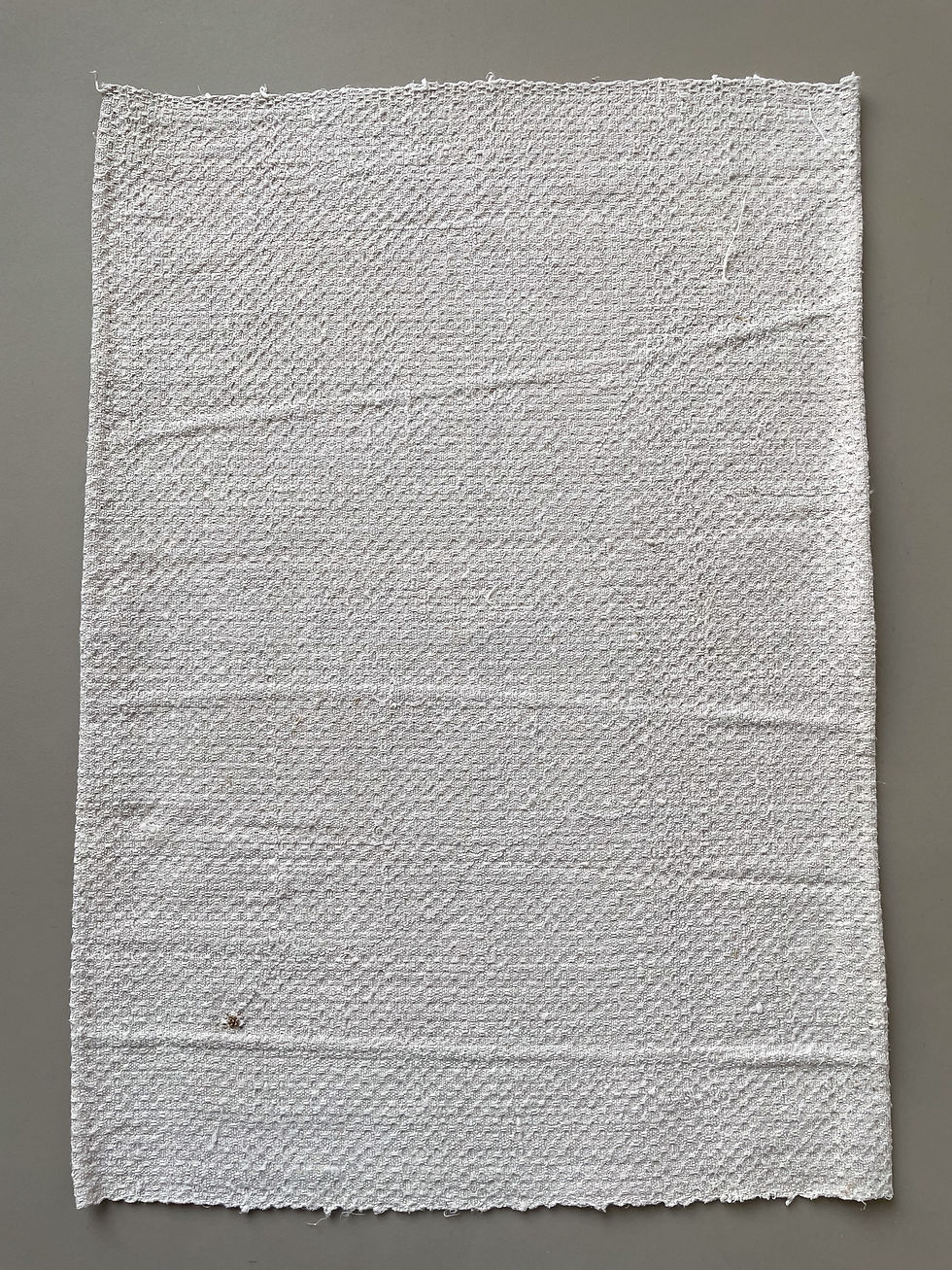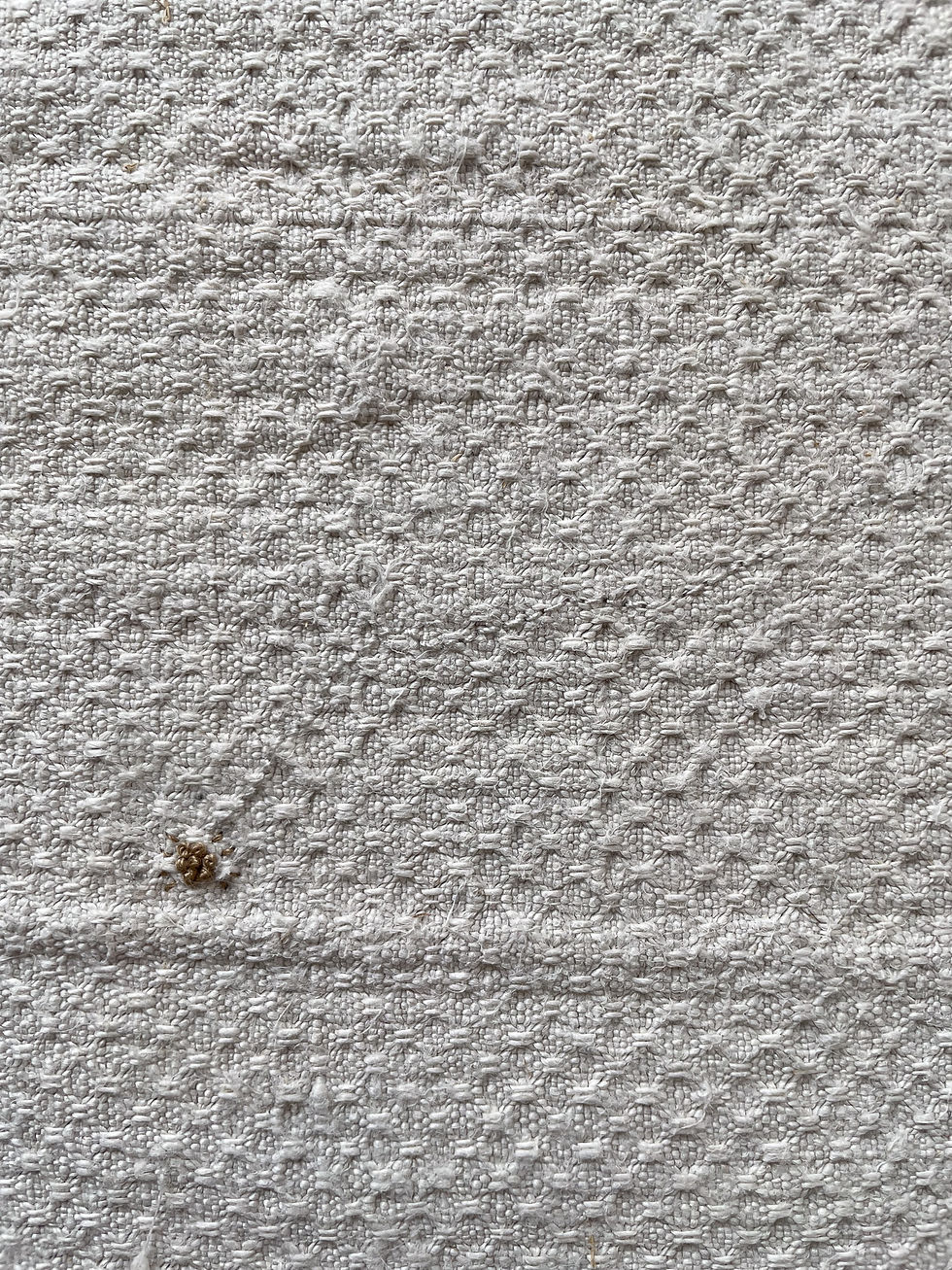napkins for zweiundvierzigmeter – part 1
- anjarlampert
- Nov 18, 2024
- 2 min read
Updated: Nov 19, 2024
at the beginning of this year, tobi from zweiundvierzigmeter commissioned 30 hand-sewn (i.e. hand-hemmed in this case) and hand-embroidered napkins.
the prompt gave me a lot of freedom (otherwise it probably wouldn't have materialised; i find commissioned work very restrictive very quickly and prefer to cancel if i feel too micro-managed or if it feels too much like production or reproduction) - beforehand we looked and felt our way through fabrics from my collection together, talked about our approaches to our work, about craftsmanship in general, i looked at tobi's work in his ceramics studio (shapes, colours, textures, aesthetics, how they feel to me, what ideas and images they generate), and listened to what tobi has in mind for textiles for zweiundvierzigmeter - what they should be able to do, what effect they should have on the guests, and what they shouldn't be.
the fabric from which the napkins are made comes from today's saxony-anhalt, probably from the area around magdeburg. it is a fabric made of 100 % linen, hand-woven, dated between 1870 and 1930, but most probably before the first world war. the selvedge, the way the fibres are spun into yarn, the number and type of plant parts still present in the fabric all point to this. the fabric is thick and robust, i assume it was originally intended as a towel or household cloth - the weaving pattern is often found, even in a finer form, in cloth by the metre. here is a close-up:

as was customary in the past, the beginning of the fabric bale often was hemmed. i have preserved this hem and so there is a napkin that has a hem from me and one from an unknown person who has long since died, but who has also worked on this project, as well as the many craftspeople who made the production of the fabric possible in the first place: the farmers who grew the flax, the people who harvested, retted, threshed, hackled, carded, spun and woven it.
i hemmed the napkins by hand with linen sewing thread from poland; embroidered with cotton thread from a german manufacturer.
here is the first part of the napkins, a picture of the whole napkin and a few detail shots.
inspiration/ideas/thoughts: islands, organic structures, patterns on tree bark









inspiration/ideas/thoughts: organic structures of fungi as in spalted wood, lightning, riverbeds, blood vessels




inspiration/ideas/thoughts: visible/invisible, silk; the embroidered line is only visible at a certain angle to the light; at first glance, the napkin is empty. the line continues on the second napkin, forming a continuous line across two napkins.





inspiration/ideas/thoughts: homage to the running stitch, the simplest of all sewing/embroidery stitches; it is found worldwide and is incredibly versatile; darning - the repairing of textiles; embroidery that creates woven texture. layered stitches that create density and surface.










inspiration/ideas/thoughts: forty-two - how can i represent the number forty-two in different ways? here: 42 clustered sorbello stitches


inspiration/ideas/thoughts: 42 as a binary number; clue embroidered in the bottom right corner. black x = 1; silver x = 0






inspiration/ideas/thoughts: 42 as a binary number, written with roman numerals and japanese kanji.








inspiration/ideas/thoughts: 42 sorbello stitches spread over the entire surface


inspiration/ideas/thoughts: 42 as a tally sheet in units of 5




continued in the second part.
Comentarios